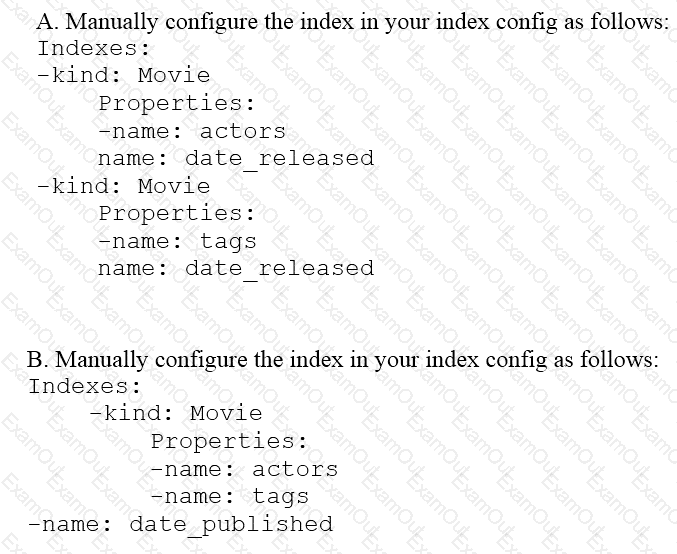Business owners at your company have given you a database of bank transactions. Each row contains the user ID, transaction type, transaction location, and transaction amount. They ask you to investigate what type of machine learning can be applied to the data. Which three machine learning applications can you use? (Choose three.)
You create an important report for your large team in Google Data Studio 360. The report uses Google BigQuery as its data source. You notice that visualizations are not showing data that is less than 1 hour old. What should you do?
You have Google Cloud Dataflow streaming pipeline running with a Google Cloud Pub/Sub subscription as the source. You need to make an update to the code that will make the new Cloud Dataflow pipeline incompatible with the current version. You do not want to lose any data when making this update. What should you do?
You are working on a sensitive project involving private user data. You have set up a project on Google Cloud Platform to house your work internally. An external consultant is going to assist with coding a complex transformation in a Google Cloud Dataflow pipeline for your project. How should you maintain users’ privacy?
Your weather app queries a database every 15 minutes to get the current temperature. The frontend is powered by Google App Engine and server millions of users. How should you design the frontend to respond to a database failure?
You have spent a few days loading data from comma-separated values (CSV) files into the Google BigQuery table CLICK_STREAM. The column DT stores the epoch time of click events. For convenience, you chose a simple schema where every field is treated as the STRING type. Now, you want to compute web session durations of users who visit your site, and you want to change its data type to the TIMESTAMP. You want to minimize the migration effort without making future queries computationally expensive. What should you do?
Your company is loading comma-separated values (CSV) files into Google BigQuery. The data is fully imported successfully; however, the imported data is not matching byte-to-byte to the source file. What is the most likely cause of this problem?
You are deploying a new storage system for your mobile application, which is a media streaming service. You decide the best fit is Google Cloud Datastore. You have entities with multiple properties, some of which can take on multiple values. For example, in the entity ‘Movie’ the property ‘actors’ and the property ‘tags’ have multiple values but the property ‘date released’ does not. A typical query would ask for all movies with actor=

You want to schedule a number of sequential load and transformation jobs Data files will be added to a Cloud Storage bucket by an upstream process There is no fixed schedule for when the new data arrives Next, a Dataproc job is triggered to perform some transformations and write the data to BigQuery. You then need to run additional transformation jobs in BigQuery The transformation jobs are different for every table These jobs might take hours to complete You need to determine the most efficient and maintainable workflow to process hundreds of tables and provide the freshest data to your end users. What should you do?
You are designing the database schema for a machine learning-based food ordering service that will predict what users want to eat. Here is some of the information you need to store:
The user profile: What the user likes and doesn’t like to eat
The user account information: Name, address, preferred meal times
The order information: When orders are made, from where, to whom
The database will be used to store all the transactional data of the product. You want to optimize the data schema. Which Google Cloud Platform product should you use?

